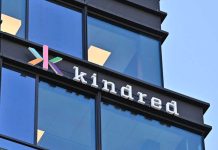The governance of Athens-listed gambling and lottery technology group Intralot SA has called for full-scale operating review, having suffered a year of global declines across its product and services portfolio. Trading in Latin America has been particularly difficult as a result of the Argentine Peso collapse, while the termination of lottery contracts in the US hit performance stateside.
Publishing its full-year 2018 results, Intralot recorded declines across all core reporting metrics, as corporate revenues fell by 6.4% to €870m (FY2017: €930m), combined with a 23% EBITDA decrease to €116m (FY2017: €151m). Licensed Operations fell by 3.5%, Game Management by 9% and Technology Contracts 12%.
South American ‘FX headwinds’ have been cited as a major contributing factor, as Intralot could not escape the Argentine Peso collapse (150% against the €), which would lead to a €23 million revenue impact on its Licensed Operations unit – €577m (FY2017: €598m).
Furthermore the Athens firm reported a slowdown in US lottery sales attributed to its terminal contract losses in the states of Ohio and South Carolina, combined with start-up expenses related to the Illinois Lottery.
With little to cheer, a tough Q4 2018 closing period saw the firm lose its critical IDDAA Turkish sports tender monopoly, triggering the return of founder and majority shareholder Sokratis Kokkalis to lead the company as Group CEO.
“The reported revenue and earnings contraction during 2018 points to the need for a wide reorganization of our production and operational capabilities towards significant cost reductions and operational efficiencies,” said Kokkalis.
He added: “This is why we recently conducted a management reshuffle in order to design and implement a new cost-reduction plan through better synergies between divisions and between headquarters and subsidiaries. I am personally committed and focused on our mission to best address the needs of our clients and to improve the cash flow generation of our business through a combination of new business and organic growth opportunities, coupled with cost optimization, while continuing divestment from non-core assets when market conditions are favorable.”














